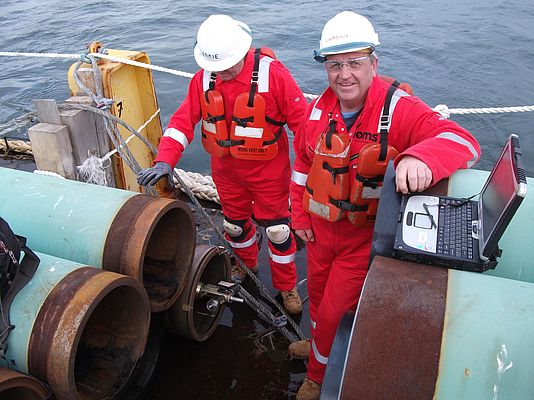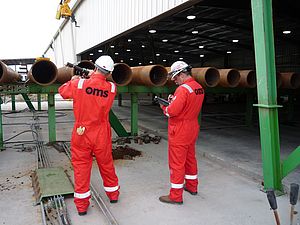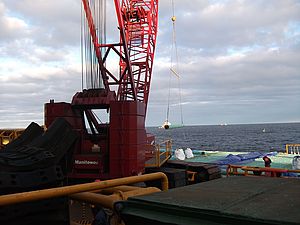Pipe measurement and fit-up on the ExxonMobil/Neftegas-operated Sakhalin Arkutun-Dagi oil and gas field project in Russia helped to avoid delays due to mismatched pipes for the Water Injection line.
Sakhalin-1's Arkutun Dagi field is located off the northeastern coast of Sakhalin Island in the Far East of Russia. Operations and facilities are located on both the island and mainland Russia. The Arkutun-Dagi development will employ an offshore, ice-resistant fixed platform which is expected to become the largest oil and gas production platform in Russia. The first oil is expected to be produced there in 2014.
Part of McDermott’s work scope for the project was the installation of a 20” Water Injection line, comprising of 1,978 joints of 20” x 33mm WT linepipe and 21 joints of 20” x 36.3mm WT linepipe. Prior to the involvement of Optical Metrology Services (OMS), portions of this line had already been installed during a ‘Beach Pull’. McDermott contracted OMS to proactively manage pipe fit-up for the remainder of the project. This was a challenging project due to the need to achieve stringent fit up for a high pressure line in a seismically-sensitive region.
OMS’ deployed personnel used PipeChecker laser-based measurement tool to measure the geometry of the internal walls of more than 3,000 pipe ends. The Smart-Fit system was also used to optimise the sequencing of pipes on board the barges prior to the firing line.
Smart-Fit uses pipe measurement data to predict and control fit-up, before the pipes are brought into the bead stall for welding. This prevents production delays due to poor fit-up and manages the assembly of problem pipes to maximise welding productivity.
Pipes were measured onshore at Kholmsk and at the pipe lay site, on board the Crest 289 material barge, the Maritime West material barge and the DLB-KP1 laybarge.
Pipe measurement data was made available to a Smart-Fit station onboard the pipelay barge. This comprised a laptop located prior to the firing line. All pipes brought on board the laybarge were identified and logged into the software. This enabled the pipes to be sequenced so that the most closely matched ends were brought together for welding. Pipes were then loaded into bevelling in the planned sequence.
Rotational positions for each pipe end were also determined, to put adjacent pipes into the best relative rotational position in order to minimise HiLo. Rotation marks were added to pipes, allowing the optimal rotation to be achieved when pipes were brought into the bead stall. Production delays due to mismatched pipes were therefore avoided.
Dr Richard Gooch, Director of Technology at OMS commented: “The arctic conditions in Sakhalin means that the ocean freezes over in October or November. It was therefore critical that OMS completed its measurement and fit-up work on time. If we hadn’t, or if the fit-up was not optimised for McDermott’s welders, the ocean might have frozen over before the pipe could be laid. Heavy lift vessels had already been booked for Spring 2012 to perform work on the platforms. If the pipeline was unfinished, the window of opportunity would have been missed for one year. Basically, without the optimised pipe fit up, a much larger quantity of pipes would have been rejected and it would have been very difficult to complete the project on time.”
Robert McLean, Project Quality Manager at McDermott commented: “OMS did an outstanding job for us on the Sakhalin project. Without doubt, we would not have managed to complete and lay the pipe water injection line without the valuable contribution and expertise of OMS engineers.”
Pipe measurement
for oil & gas field project
- by Optical Metrology Services Ltd
- March 30, 2012
- 245 views




















